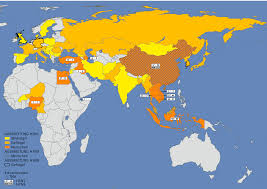Understanding H5N1: The Avian Influenza Virus

Introduction
The H5N1 strain of avian influenza, commonly known as bird flu, is a viral infection that primarily affects birds but can infect humans and other animals. Since its emergence in the late 1990s, H5N1 has been a significant concern for public health authorities globally due to its high mortality rate among humans when contracted. Understanding H5N1 is crucial for managing potential outbreaks and ensuring public safety.
Current Events and Significance
Recently, there have been reports of H5N1 outbreaks in various countries, notably in Southeast Asia and parts of Europe. Countries such as Vietnam, Indonesia, and Hungary have reported cases in wild birds and poultry. With the ongoing evolution of this virus, health experts are concerned about its potential to mutate and become a transmissible strain among humans, raising fears of a pandemic. The World Health Organization (WHO) and various governments are closely monitoring these incidents to prevent further spread.
As of September 2023, there are ongoing vaccination campaigns targeting poultry in affected regions. These efforts are essential in controlling H5N1’s spread within domestic bird populations and limiting the potential for transmission to humans.
Human Cases and Health Risks
While H5N1 is not easily transmitted between humans, there have been sporadic cases of human infections, primarily linked to direct contact with infected birds or contaminated surfaces. The mortality rate for humans infected with H5N1 is approximately 60%, making it one of the deadliest of the avian influenza viruses. Public health responses have included heightened surveillance, the culling of infected poultry, and education campaigns to inform the public about safe practices when handling birds.
Conclusion
The H5N1 virus poses a significant threat not only to the poultry industry but also to global public health. Continued vigilance through monitoring and vaccination of birds, alongside public education on preventing human infection, is vital in reducing risks. Experts predict that with the current trends in global avian health, the risk of H5N1 spilling over into human populations will remain. Therefore, it is crucial for communities, health officials, and governments to stay prepared and respond proactively to manage this persistent threat.









